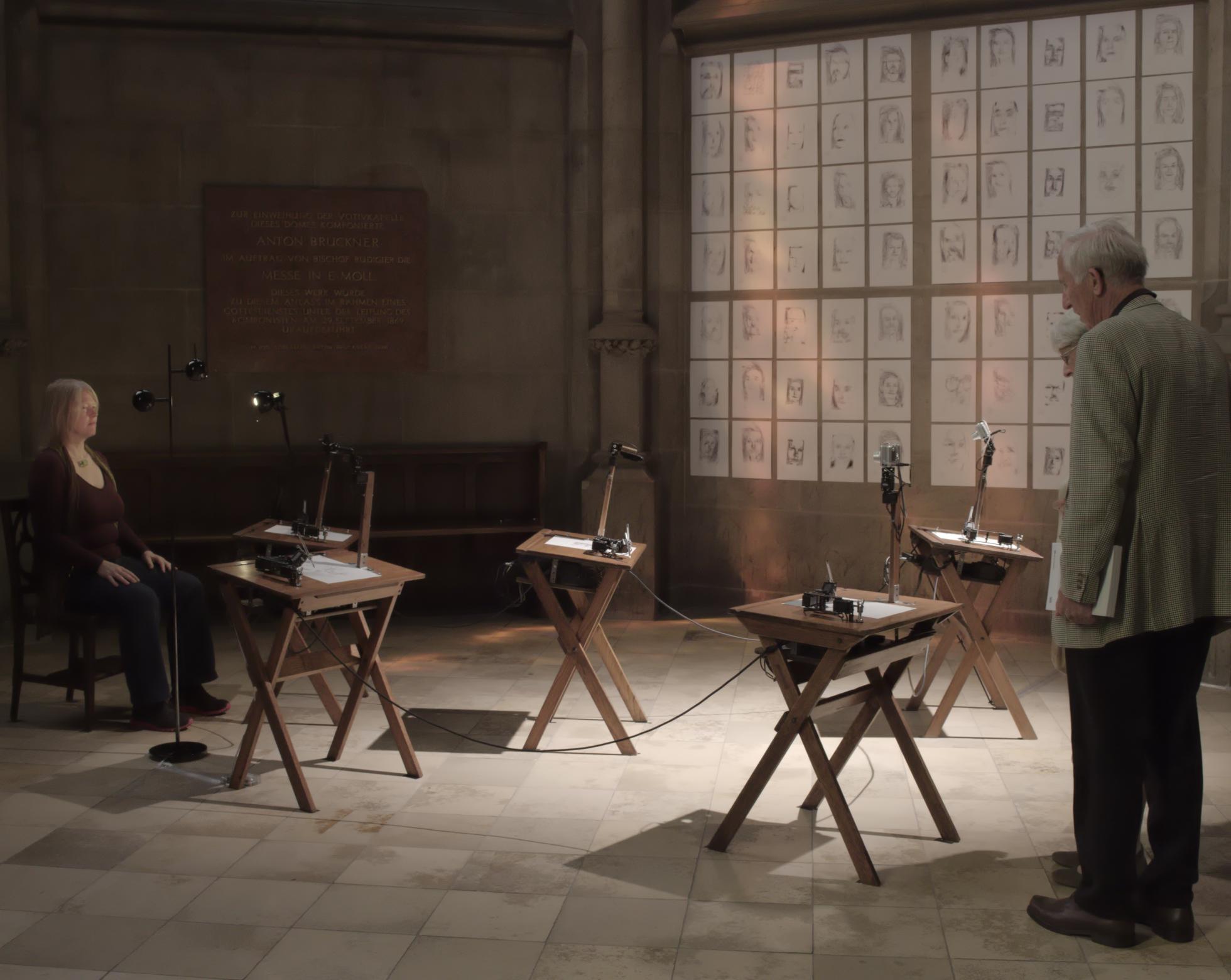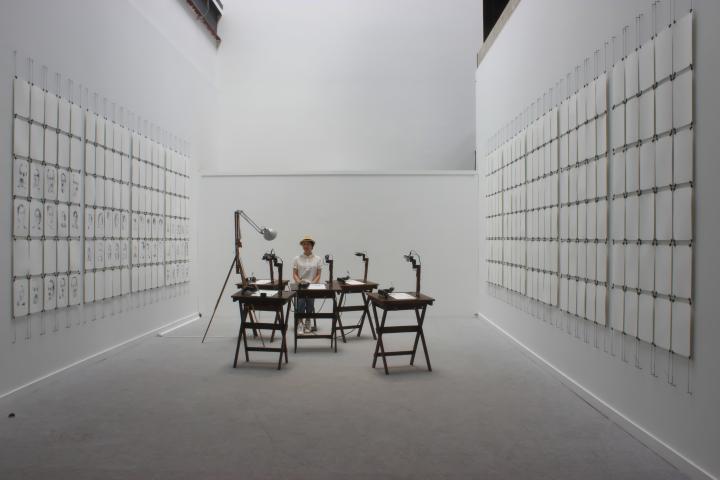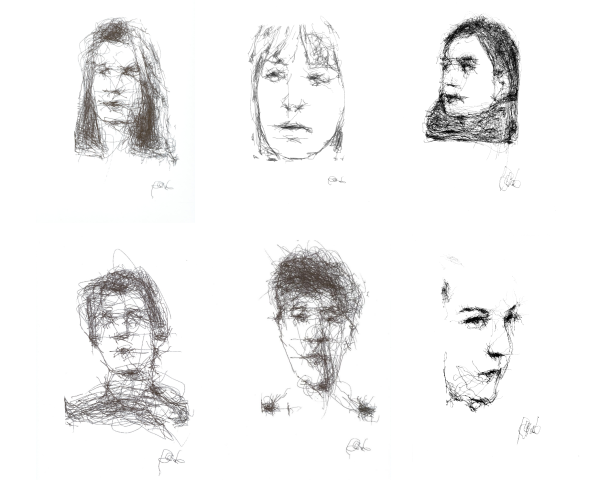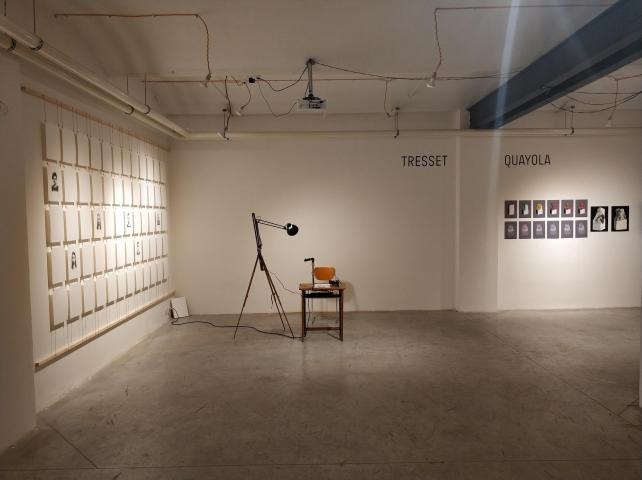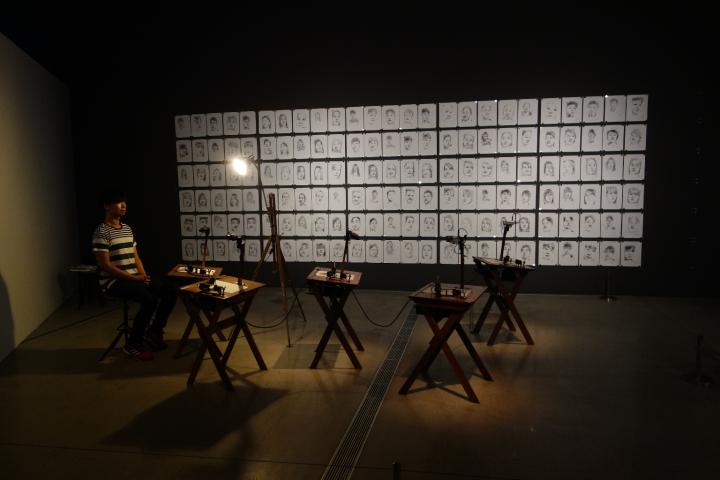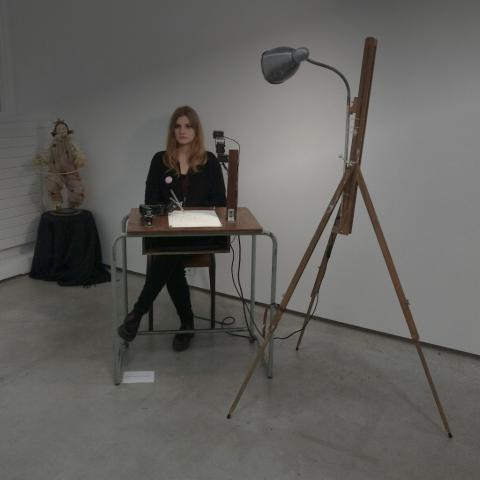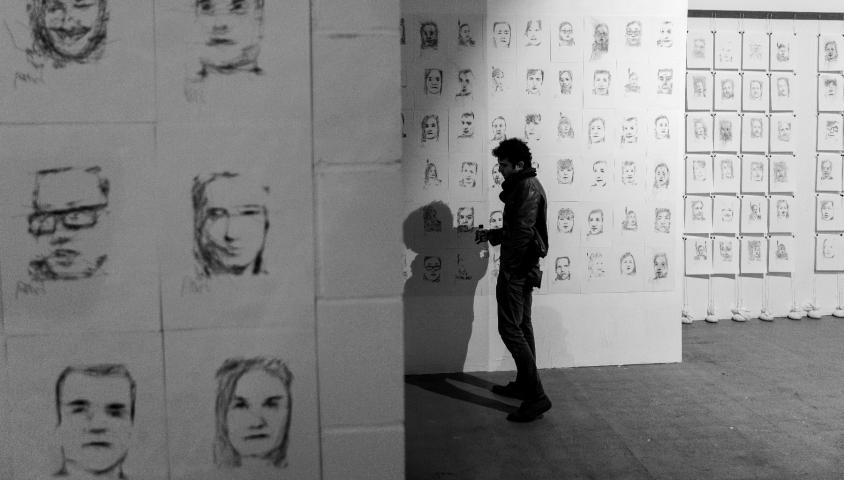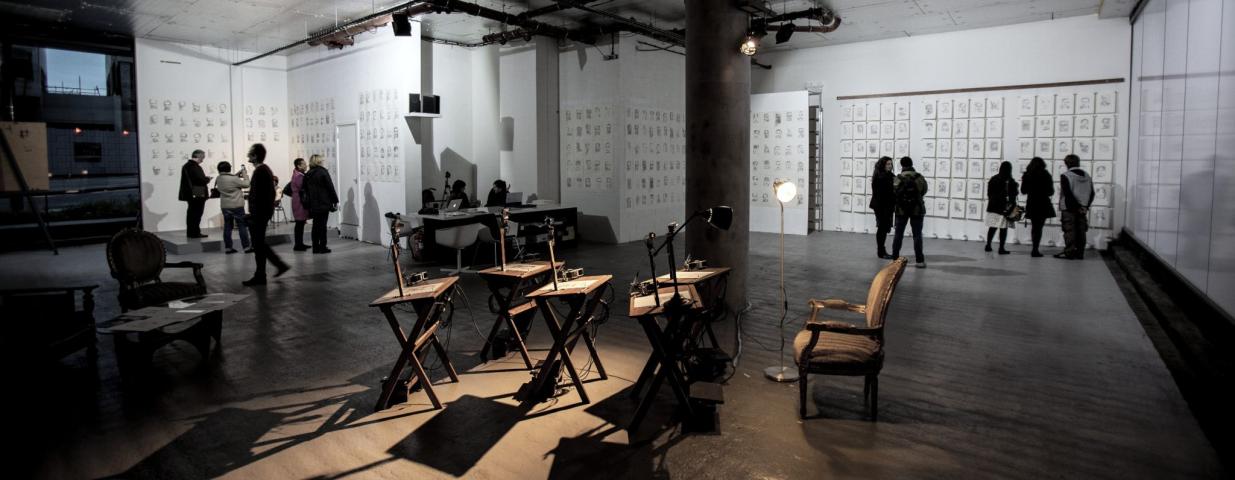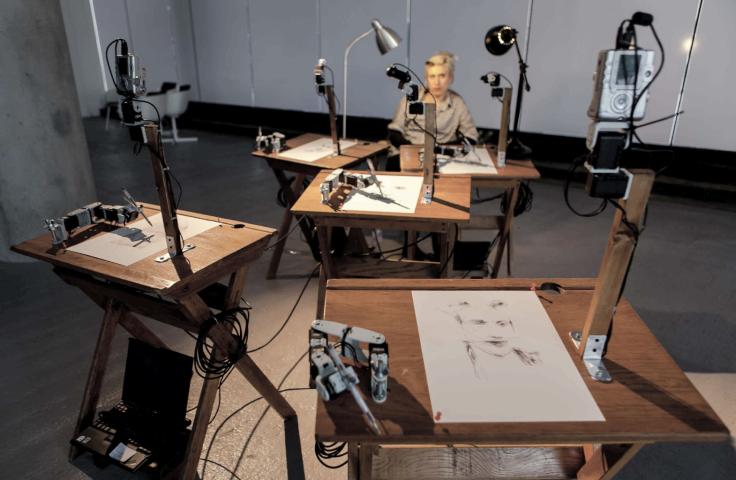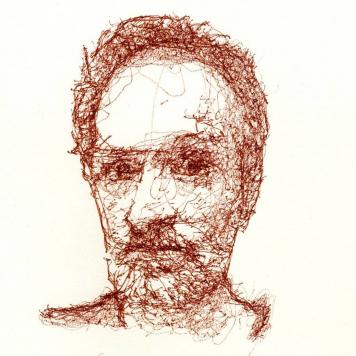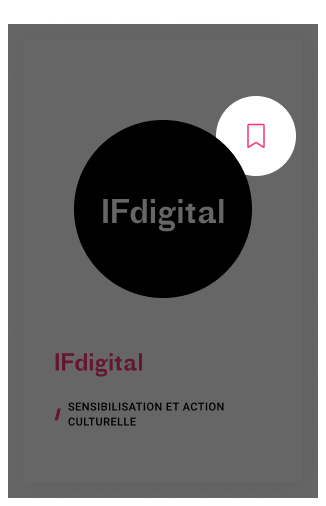Human Study # 1, RNP is a theatrical installation in which the human becomes an actor. Through a scene that reminds us of the live model drawing class, the human takes place to be drawn by several robots. These robots, stylized artists, are only capable of drawing obsessively. Like a model of a drawing class, the human loses his identity and becomes an object of study. He is passive while the robots are invested with the artistic role.
Human Study #1, Paul
Find out more
Human Study # 1, 5RNP (5 Robots Named Paul) is a theatrical installation in which the human becomes an actor. Through a scene that reminds us of the live model drawing class, the human takes place in order to be drawn by several robots. When the subject arrives after making an appointment, he sits in a chair. An assistant attaches sheets of paper to the robots' desk and turns them on, twisting their arm or knocking three times. Robots, stylized artists, are only capable of drawing obsessively. Their bodies are old school tables on which the paper is attached with magnets. Their left arm, fixed to the table, hold a black pen, and can only draw. The robots from this series all look alike, except for their eyes, which are obsolete digital cameras, or low-definition webcams. Their eyes focus on the subject or on the current drawing, which gives them an undeniably human side. The session lasts between 20 and 30 minutes, and the human cannot see the drawing that is being made. The seated person sees only the robots which look at him, then which look at the drawing and sometimes take breaks. The sound produced by each engine of the robots creates an improvised soundtrack. The seated person finds himself in an ambivalent situation, at the mercy of the eyes of the robots which scrutinize him, but also becomes the object of artistic attention. Like a model of a drawing class, the human loses his identity, and becomes an object of study. He is passive while the robots are invested with the artistic role. Even though still, the model strikes a pose, and for viewers, the model is an integral part of the installation. This installation can be seen as an artistic prosthesis or a behavioral self-portrait of the artist. Even though Paul's way of drawing is based on Tresset's technique, his style is not a pastiche, but rather an interpretation influenced by robotic characteristics. The drawings are often regarded as a work of art by the public, designers, amateurs, and are gradually placed on the walls of the gallery, day after day.
Votre contact
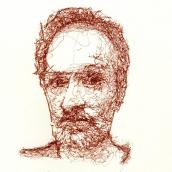
Merci pour votre contribution.
Vous serez informés de sa publication ou d’une éventuelle demande de compléments.





